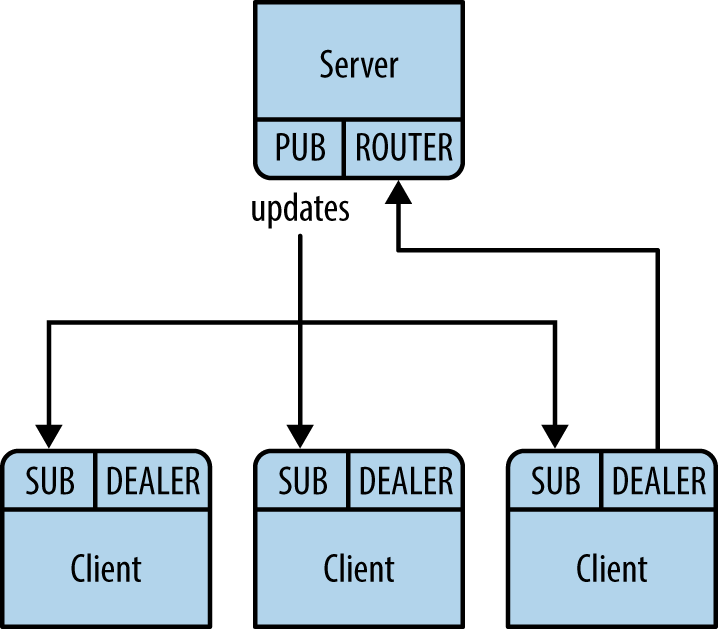Getting an Out-of-Band Snapshot
So now we have our second problem: how to deal with late-joining clients or clients that crash and then restart.
For a late (or recovering) client to catch up with a server, it has to get a snapshot of the serverâs state. Just as weâve reduced âmessageâ to mean âa sequenced key-value pair,â we can reduce âstateâ to mean âa hash table.â To get the server state, a client opens a DEALER socket and asks for it explicitly (Figure 5-4).

Figure 5-4. State replication
To make this work, we have to solve a problem of timing. Getting a state snapshot will take a certain amount of time, possibly fairly long if the snapshot is large. We need to correctly apply updates to the snapshot, but the server wonât know when to start sending us updates. One approach would be to start subscribing, get a first update, and then ask for âstate for update N.â This would require the server to store one snapshot for each update, though, which isnât practical.
Instead, we will do the synchronization in the client, as follows:
The client first subscribes to updates and then makes a state request. This guarantees that the state is going to be newer than the oldest update it has.
The client waits for the server to reply with state, and meanwhile queues all updates. It does this simply by not reading them: ÃMQ keeps them queued on the socket queue.
When the ...
Get ZeroMQ now with the O’Reilly learning platform.
O’Reilly members experience books, live events, courses curated by job role, and more from O’Reilly and nearly 200 top publishers.

